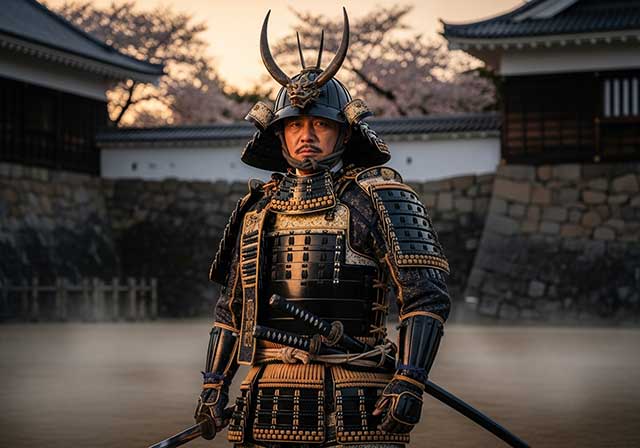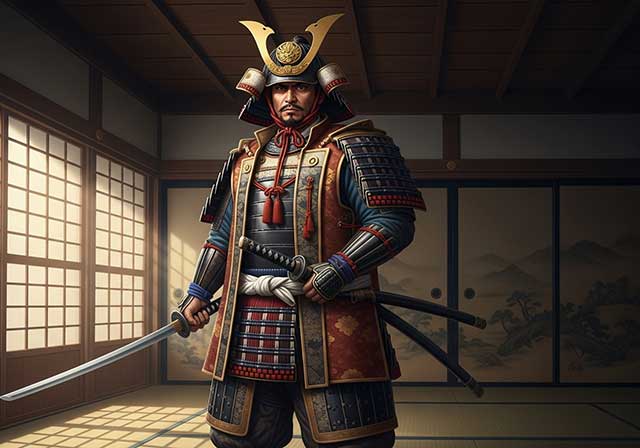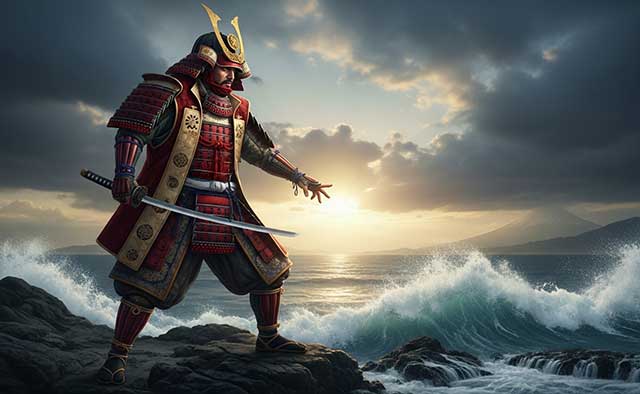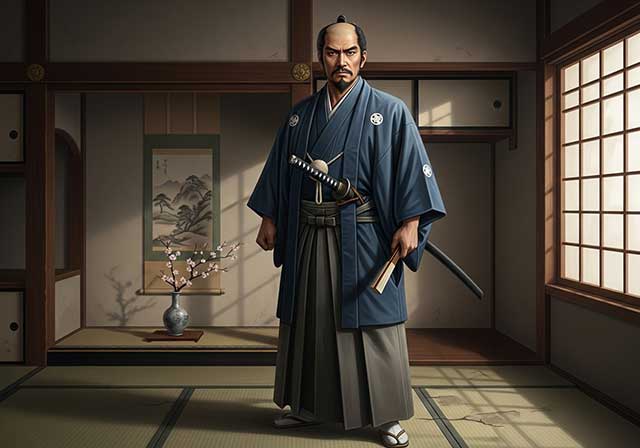
The Asakura family, who claimed kinship with several emperors, lived in the province of Echizen. Its representatives were considered hereditary vassals of the Shiba clan. From the mid-15th century until their defeat by Oda Nobunaga's army in 1573, which resulted in the final destruction of the Asakura clan, they were a significant military and economic force.
Asakura Toshikage stood out for his outstanding abilities from a young age. In 1453, the Bakufu entrusted him with settling the feuds between the two branches of the Shiba clan. Taking advantage of this opportunity, Toshikage began to seize lands in the province of Echizen that belonged to temples and noble families. The influence of the Shiba family gradually weakened, and by 1471, Asakura had been appointed governor of the province of Etzen, a position that had traditionally belonged to the Shiba clan.
Toshikage built a castle in Ichijōgatani and moved his headquarters there. Over the next hundred years, the region experienced a period of economic and cultural prosperity. Ichijōgatani became a major trading center, which was only destroyed during the wars with Oda Nobunaga.
Toshikage himself is considered a typical example of a ruthless gokoku-daimyo — a representative of an impoverished samurai clan who managed to defeat the nobility. He was distinguished by his realistic mindset and was free from prejudice in politics. The seventeen articles, written in Chinese style, may have been compiled after his death, but they are believed to undoubtedly reflect Toshikage's ideas and character.
These articles are distinguished by their strict pragmatism and rationality, with an almost complete absence of religious motifs. The number of articles — seventeen — is reminiscent of the constitution of Shotoku Taishi, created in the 7th century and also consisting of seventeen paragraphs. Perhaps this contains a hint of the Asakura family's aspirations and the author's desire to leave a mark on history no less significant than that left by Shotoku Taishi.
See also
-
Ouchi Yoshioki

Ouchi Yoshioki, the ruler of the provinces of Suo, Nagato, and Iwami, was one of the most capable military commanders and politicians of the late 15th and early 16th centuries. The son of Ouchi Masahiro, he governed from his residence in Yamaguchi in the province of Suo. In 1499, Yoshioki gave refuge to Shogun Ashikaga Yoshitane, who had been driven out of Kyoto by Hosokawa Masamoto. Shogun Yoshizumi, Masamoto’s protégé, ordered the lords of Kyushu to unite their forces against Yoshioki; however, they did not dare to do so, fearing the power of a man who by that time controlled six provinces. Having gathered a substantial army, Yoshioki marched from his native Suo toward Kyoto in order to restore Shogun Yoshitane to power.
-
Otomo Sorin

Ōtomo Yoshishige came from a noble lineage, being the eldest son of Ōtomo Yoshiaki, the ruler of Funai Province. The roots of the Ōtomo family traced back to Fujiwara Hidesato, the adopted son of Nakahara Chikayoshi. Fujiwara served Minamoto Yoritomo during the Genpei War and took part in battles in Mutsu Province in 1189. In 1193, he was appointed shugo of Buzen and Bungo Provinces, after which he adopted a new surname—Ōtomo.
-
Okudaira Sadamasa

Sadamasa was the son of Okudaira Sadayoshi and took part in several battles under Tokugawa Ieyasu, distinguishing himself in the Battle of Anegawa in 1570, where he took two heads. Around 1572 he was forced to enter the service of the Takeda clan, but after the death of Takeda Shingen in 1573 he returned to Tokugawa, leaving Tsukude Castle together with his men. As a result of this defection, Takeda Katsuyori ordered the execution of Sadamasa’s wife and brother, who were being held as hostages.
-
Okubo Tadatika

Tadatika, the son of Okubo Tadayō, entered the service of Tokugawa Ieyasu at the age of eleven, and took his first head in battle when he was sixteen. After the establishment of the Tokugawa shogunate, he was appointed as a rōjū — a senior bakufu official — and was regarded as one of Ieyasu’s most trusted advisors, alongside Honda Masanobu. He is also known for his military chronicle Mikawa Monogatari, which describes Ieyasu’s rise to power and the early years of the Tokugawa shogunate.
-
Okubo Nagayasu

Nagayasu was the second son of Okura Nobuyasu, a sarugaku theater actor from the Takeda clan. Takeda Shingen recognized the young man’s potential and took him into service, appointing him as a vassal to his general, Tsuchiya Masatsugu. During this period, Nagayasu changed his family name to Tsuchiya. He was entrusted with developing the Takeda clan’s gold mines as well as handling matters related to taxation.
-
Nitta Yoshisada

Nitta Yoshisada was a loyal soldier of Emperor Go-Daigo, who in the 1330s attempted to restore direct imperial rule in Japan. The Nitta family was related to the Ashikaga house and was older in lineage. However, they did not join Minamoto Yoritomo at the start of his war with the Taira, as the Ashikaga did, and therefore did not receive high positions in the Kamakura shogunate. This may have been one of the reasons why Yoshisada rose against the Hōjō clan in 1333.
-
Natsume Yoshinobu

Yoshinobu, a long-time vassal of the Matsudaira and Tokugawa clans, governed Hamamatsu Castle on behalf of the Tokugawa house. During the clashes between the Imagawa, Takeda, and Matsudaira clans, he served in the garrison of Nagasawa Castle and in 1562 took part in raids under the command of Itakura Shigezane. When, in 1563, a revolt of the Sōtō-shū sect followers broke out in Mikawa Province, Yoshinobu joined the rebels together with Honda Masanobu and Hachiya Sadatsugu.
-
Nambu Nobunao

The Nambu clan was an ancient and powerful family that traced its lineage back to the Minamoto shoguns and had controlled a significant part of the Tohoku region in northern Honshu since the 12th century. Nobunao was born in Ikatai Castle, located in what is now the city of Iwate. He was the second son of Ishikawa (Nambu) Takanobu, the 22nd head of the Nambu clan. In 1565, Nobunao’s uncle, Nambu Harumasa, adopted him, brought him to Sannohe Castle, and named him his heir, later giving his daughter in marriage to him.

